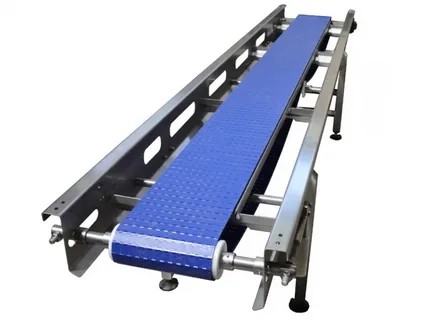Ziggurat Industrial Group, as the largest reference of all types of rollers in Iran, is proud to provide a comprehensive guide for you dear ones active in the industry. In the changing world of the industry, familiarity with the types of rollers and their applications is of particular importance. It doesn’t matter if you work in the design, production, implementation or even purchase of industrial parts, knowing the types of rollers will help you choose the best and most efficient solution for your projects. In this article, we intend to introduce the types of rollers, their uses, advantages and disadvantages. By reading this comprehensive article, you will become a professional expert in the field of roller types.
Types of rollers
As you know, types of rollers are classified according to their appearance, material, load capacity and application. In this section, we introduce the most widely used types of rollers in the industry.
Steel roller:
This type is one of the most common types of rollers that are made of steel. Steel rollers are divided into different types such as plain steel roller, galvanized steel roller, stainless steel roller and rubber coated steel roller. Among the advantages of steel roller, we can mention high strength, long life, good load tolerance and reasonable price. Also, the disadvantages of this type of roller are high weight, the possibility of rusting in some types and making noise during movement.
Plastic roller:
Plastic rollers are made of different materials such as polyethylene, polyamide and polypropylene. This type of roller is suitable for transporting sensitive materials or in wet and acidic environments. The advantages of plastic roller are light weight, corrosion resistance, smooth and silent movement. Disadvantages of plastic roller also include lower strength than steel and limited bearing capacity.
Steel roller:
These types of rollers are made of stainless steel and are used in sanitary environments or with corrosive materials. The advantages of steel rollers include high corrosion resistance, long service life, and ease of cleaning. Disadvantages of roll steel include higher price than other types and their greater weight.
Aluminum roller:
Aluminum rollers are used for transporting light materials in the food and pharmaceutical industries. The advantages of aluminum roller are very light weight, corrosion resistance and reasonable price. The disadvantages of this type of roller include low strength and limited load bearing.
Granule roller:
These types of rollers are suitable for transporting fragile or scratch-sensitive materials. Having a soft rubber coating, the granule roller prevents damage to the goods during transportation. The advantages of the granule roller include product protection, smooth and silent movement. The disadvantages of this type of roller also include a higher price than other types and the gradual erosion of the rubber coating over time.
Dynamic roller:
These types of rollers are driven by electric power and are used to transport materials on inclined paths or to sort and separate goods. Among the advantages of the dynamic roller, we can mention the ease of transferring materials in inclined paths, the possibility of controlling the speed of movement and the automation of production lines. Disadvantages of dynamic roller also include higher cost compared to simple types, the need for electrical wiring and the possibility of electrical components failure.
Tapered roller:
These types of rollers are used to transfer materials with variable width. The body of the conical roller is designed in a conical shape, which makes the materials with different widths to be centered on the conveyor belt. Among the advantages of the conical roller, it can be mentioned that it is easy to transfer materials with different widths and prevent the product from being deviated on the conveyor belt. The disadvantages of this type of roller also include more complexity in design and construction than simple types.
Spring roller:
Spring rollers are used to absorb shock and vibration when loading or unloading goods on the conveyor belt. These types of rollers are available in two types, fixed and movable. Among the advantages of the spring roller, we can point out the protection of goods against impact, noise reduction, and increasing the life of the conveyor belt. Disadvantages of spring rollers include increased complexity in design and construction and the need for periodic maintenance.
Guide roll:
Guide rollers are installed on both sides of the conveyor belt and their task is to guide and prevent the belt from deflecting. These types of rollers are usually made of steel or plastic. The advantages of the guide roller include increasing the accuracy of the conveyor belt and preventing damage to the edges of the belt. The disadvantages of the guide roller also include the increase in cost and complexity in the design and installation of the conveyor system.
Choosing the right types of rollers
As mentioned in the previous sections, types of rollers are selected according to various factors such as material, load capacity, speed of movement and type of portable materials. In this section, we mention some key points in choosing the right types of rollers:
Roller material: The roller material is selected according to the type of portable material, work environment and project budget. For example, a steel roller is used to transport corrosive materials and a granule roller is used to transport sensitive materials.
Load capacity: The load capacity of the roller should be selected according to the weight of the material to be transported. Choosing a roller with a lower load capacity leads to premature failure of the roller and the conveyor.
Roller diameter: The roller diameter is selected according to the width of the conveyor belt and the type of material to be transported. The diameter of the roller should be enough to prevent the material from sliding or getting stuck on the tape.
Movement speed: The movement speed of the roller is selected according to the speed of the conveyor belt and the type of material to be transported. Choosing the wrong speed can lead to damage to the product or reduce the efficiency of the conveyor belt.
The advantages of using high-quality rollers
Using high-quality roller types has many advantages, including:
Increasing the lifetime of the conveyor belt: high quality rollers have high strength and are resistant to wear and corrosion. This increases the life of the conveyor belt and reduces maintenance costs.
Reducing energy consumption: smooth and high-quality rollers create less friction and thus reduce the energy consumption of the conveyor belt.
Higher safety: High-quality rollers have been tested and checked for load bearing and strength, and their use ensures the safety of working with the conveyor belt.
Smooth and silent movement: High-quality rollers with proper lubrication bring smooth and silent movement to the conveyor belt.
Conclusion
Types of rollers play an important role in the correct and efficient operation of conveyors. By knowing the types of roller, their uses, advantages and disadvantages, you can choose the best and most suitable type of roller for your project. Ziggurat Industrial Group, as the largest reference for all kinds of rollers in Iran, is ready to guide you in choosing and buying high-quality rollers. Contact our experts for advice and more information.

